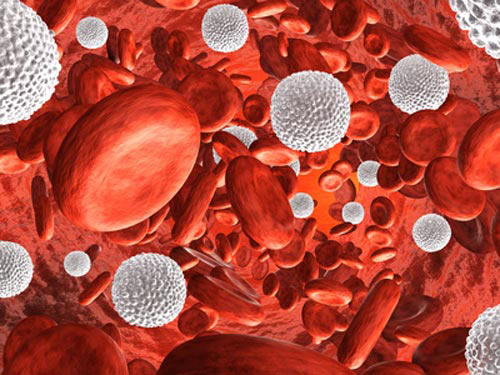By studying the molecular landscape of more than 500 patients with relapsing remitting multiple myeloma (RRMM), researchers at the University of Michigan Rogel Cancer Center have discovered that these patients exhibit a far greater prevalence of activated key oncogenic pathways than had previously been thought. The team, led by Arul Chinnaiyan, MD, PhD, director of the Michigan Center for Translational Pathology, found that upwards of 45–65% of NF-κB and RAS/MAPK pathways each had alterations.
The researchers compared the molecular makeup of patients with untreated multiple myeloma (MM) to those with the relapsed treatment-resistant version of the disease. Comparing these patients allowed researchers to describe drivers of the more aggressive form of multiple myeloma. They, in addition, identified a link between mutations and RASopathies, a certain group of genetic syndromes, in patients with relapsed treatment-resistant MM. This was the first observation of its kind.
The study, Chinnaiyan said, “… led us to discover resistance mechanisms that occur in the patients whose disease relapses and is resistant to treatment. We found that an upwards of a quarter of the patients had developed some sort of resistance mechanism. The genetic alterations that occur in these patients make them resistant to commonly used treatments of multiple myeloma.”
The investigators reported their findings in Nature Communications, in a paper titled, “The genetic heterogeneity and drug resistance mechanisms of relapsed refractory multiple myeloma.” In their study they concluded, “Our uniform integrative analyses uncover a wide range of genetic alterations, implicate known oncogenic MM pathways often at a much higher prevalence than previously known, and provide a comprehensive genetic basis for drug resistance mechanisms in RRMM.”
Multiple myeloma is the second most common hematological malignancy, the authors noted. “Over the last two decades, many novel treatments have been developed for MM, including proteasome inhibitors, immunomodulatory drugs, monoclonal antibodies, and CAR-T-cell therapies.” However, they continued, despite these significant advances in treatment, relapse is common and carries a poor prognosis.” The majority of MM patients suffer a relapse, and each subsequent relapse then limits treatment options and reduces the ability to control disease progression. “Thus, understanding the genetic heterogeneity of relapsed, refractory MM will shed light on MM disease progression as well as elucidate therapeutic resistance mechanisms.”
The team’s reported study was funded by the Multiple Myeloma Research Foundation (MMRF), as part of the MMRF’s Multiple Myeloma Research Consortium (MMRC)—a collaborative network of 22 leading cancer centers. For their work the investigators carried out targeted sequencing (tumor/normal) and whole transcriptome sequencing of 511 RRMM patients, and also reanalyzed equivalent data from 965 patients enrolled in the CoMMpass Study, to compare genetic alterations in RRMM patients, with newly diagnosed multiple myeloma (NDMM).
“Our study represents comprehensive integrative analyses of RRMM genetics and, further, systematically compares the genetic landscape of RRMM with that of NDMM,” they explained. By covering somatic mutations, indels, copy-number alterations, gene fusions, gene expression, and outlier expression, the results demonstrated that most MM patients harbor alterations in the NF-κB and RAS-MAPK pathways. “… this is a level of prevalence that has not been previously reported and includes many alterations with diverse mechanisms of action,” they claimed. “By comparing our RRMM cases with untreated patients, we identify a diverse set of alterations conferring resistance to three main classes of targeted therapy in 22% of our cohort.”
Notably, they found that IL6ST mutations were enriched in RRMM, “… suggesting that this gene is associated with MM progression.” IL6ST is involved in JAK/STAT3 signaling, and so, the team suggested, “Follow-up studies could investigate the use of approved JAK inhibitors, like ruxolitinib and tofacitinib, as potential therapeutic strategies for a subset of relapsed refractory multiple myeloma patients.”
From the new knowledge gained through this work, researchers have initiated a study that assigns patients to individual arms of a clinical trial based on their molecular profile to match alterations with potential therapies using a comprehensive sequencing-based approach.
Chinnaiyan said that while the reported study was retrospective, he’s hopeful about the future. “We’re developing tools and knowledge to translate these strategies into actual clinical impact for patients.”
Co-author Hearn Jay Cho, MD, PhD, chief medical officer of the MMRF, added, “Treatment of relapsed multiple myeloma can be extremely difficult despite the tremendous progress we have made. Uncovering new targets and therapies that act upon them may be helpful in the future for patients who develop resistance to current treatment such as CD38-targeting monoclonal antibodies. Consistent with our mission, MMRF is committed to supporting research initiatives that accelerate the discovery of new treatments and further advance care for all patients with multiple myeloma.”


